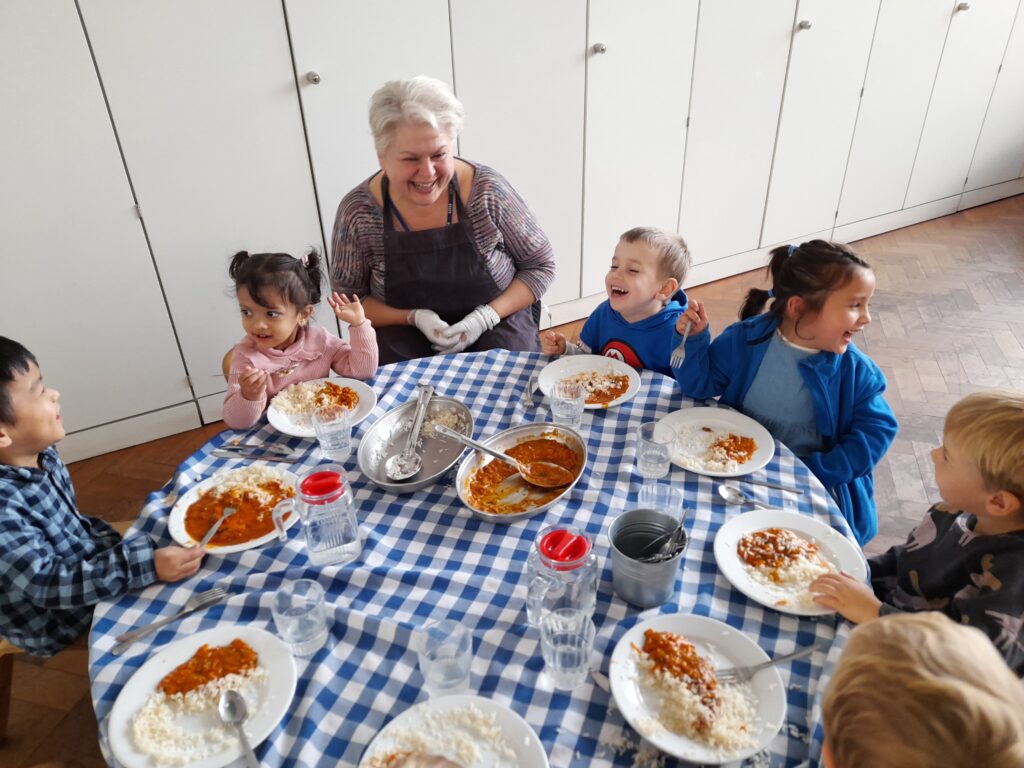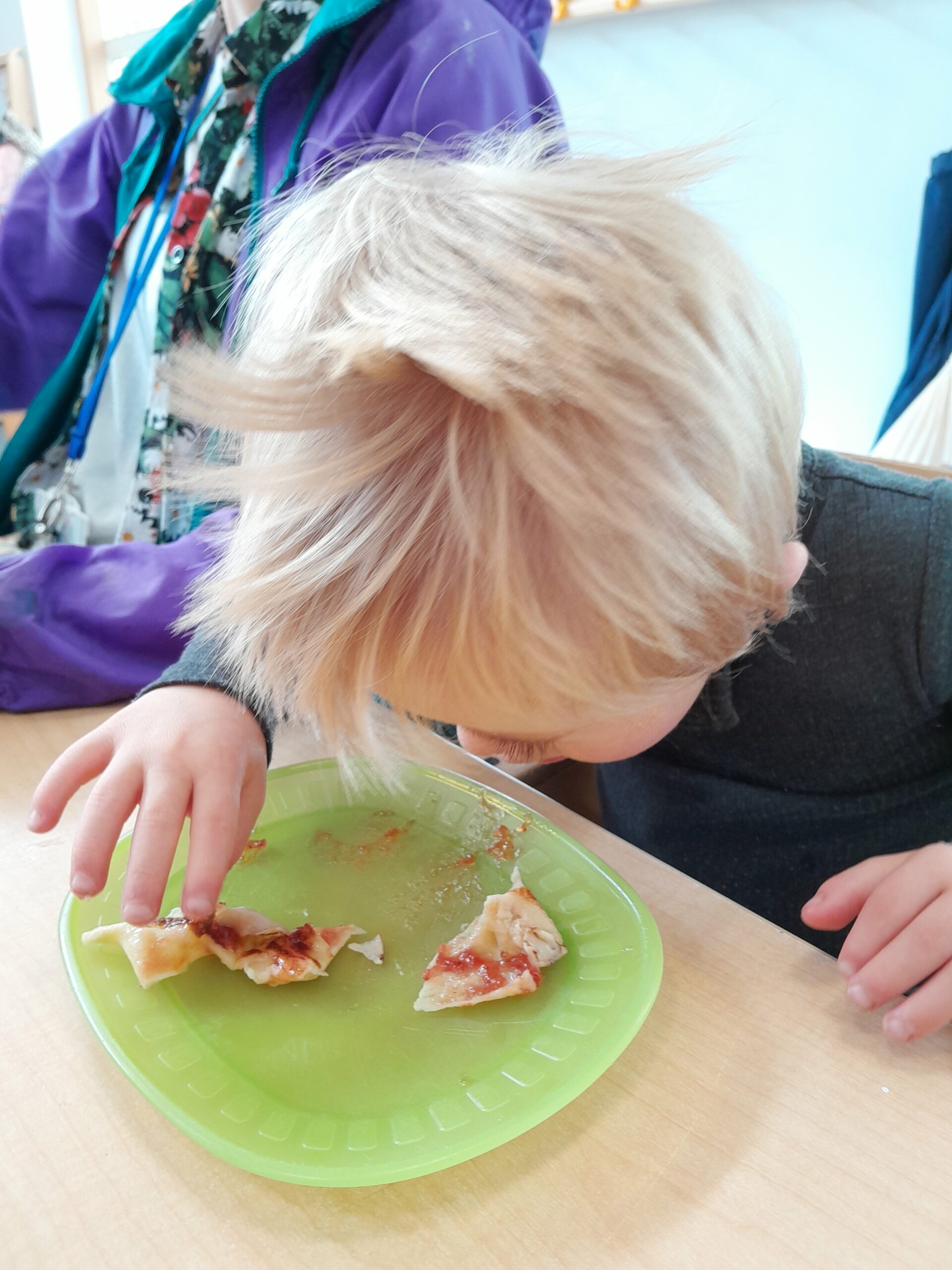Read what Rachna Joshi, Froebelian expert, has to say about Guildford Nursery School. The following is the second of her monthly blogs about aspects of Froebelian pedagogy at Guildford Nursery School.

Visiting Guildford Nursery School and Family Centre (GNSFC) in September, I was inspired by the practice, physical space as well as many of the routines and transitions that were already so embedded early in the year. One thing that I enjoyed being part of was the mealtimes - both snack time and lunch time. I noticed how these ordinary everyday routines had been carefully considered and managed to ensure that these were positive moments for the children and staff.
The physical aspects of a transition or mealtime is important, there needs to be consideration of how the space will be planned, how the children will move around that space and how it might work to support children’s independence.
During snack time, I observed a trolley with various fruits being offered to the children. These were cut and prepared so that children were able to choose what they wanted. Children didn’t have to come to the snack table until they were ready, giving them the option to organise themselves how they would like. There also wasn’t a limit on how much children can eat. In my own experience I’ve seen educators regulate how much children can eat, often finding that there isn’t enough for everyone.
An educator cut up the fruit for the children, to try to reduce waste and also involve the children in the process. A simple activity like preparing snack helps children to understand the Froebelian idea of whole and parts, by peeling tangerines and seeing how the different parts create a whole, and how this can be shared with friends during snack provides children with a real example of unity and connectedness.
The thread of unity and connectedness runs throughout mealtimes, including lunchtime, where I saw round tables laid with tablecloths, engaged adults at each table supporting children in serving themselves, pouring water and discussing what they were eating and general relaxing chatter. There was an energy of togetherness that was created in the space.
The mealtimes provide children with opportunities for making choices and being independent. Often, in schools and settings, there are not many opportunities for children to make their own choices about what they want to do or what they want to eat.
At GNSFC, as well as having a varied fruit choice, the rotating menu provided children with choices of different warm healthy food, and children were encouraged to try food. They were able to serve themselves – an opportunity for independence, and on each table they had serving bowls, therefore children were able to see how much food is available to share amongst their friends.
Another symbolism of whole and parts – taking from a larger plate to fill their own and the idea of a meal that is shared with friends. Children took part in preparing the mealtime, and some children were responsible for filling up the water jug for each table. They chose who they sat with for their meal that day to create another opportunity for choice.
The role of the educator in each mealtime was supportive and their interactions were underpinned with the Froebelian idea of freedom with guidance. Educators were encouraging and offered alternatives to different foods, or suggested they might try something new if the child was unsure, without any pressure of finishing food. Some children were upset by eating, and found lunchtime difficult with unfamiliar food. The staff gently encouraged but did not force the children to finish what they were eating.


Educators were also accustomed to accidental mess or spillages - these things happen! And when they did, they patiently supported the children in clearing up and tidying up after themselves. The staff here are clear about ensuring the mealtimes are a positive community time together. They served their own food too, and ate with the children to model healthy choices.
In my experience I have seen various tensions with mealtimes and how they are organised, especially in larger settings where children seem rushed to eat and forced to go outside. A radical solution needs to be considered to ensure that mealtimes are opportunities to develop positive eating habits, to create communities and enjoy a hot meal – that for many children may be the only hot meal they get each day. There are deeper connections to mealtimes, and how this links to the idea of care and nurture in early childhood settings, Dr Deborah Albon and Dr Amy Palmer discuss the links between children and food, as well as giving a historical context to practice in their blog Children and Food: A History.
Another tension I have experienced is the civility that is expected of children around how to eat their food – the idea that knives and forks must be used, when for some of the youngest learners the dexterity needed for this may not be age-appropriate. I know many cultures eat food with their hands and when children do this in settings and schools it can be seen as dirty and messy. Who’s idea of civility are we expecting children to adhere to? Are we considering inclusive practices even in these everyday routines like mealtimes?
GNSFC are attuned to their children and cohorts, considering carefully what children’s home life is like and how they can bring this into the settings. The conversations around the table asked about food they like and that they eat at home. One child talked fondly about the noodles her Mum had made her, and another talked about the vegetables they liked.
I urge educators to think about mealtimes with more depth, they aren’t just a space for transition. The learning opportunities here are so great and they provide children with a safe space for independence, choice making and inclusivity.

References
www.children-and-food-history.org.uk. Children and Food: A History. [online]
Available at: https://www.children-and-food-history.org.uk/ [Accessed 20 Nov. 2023].



